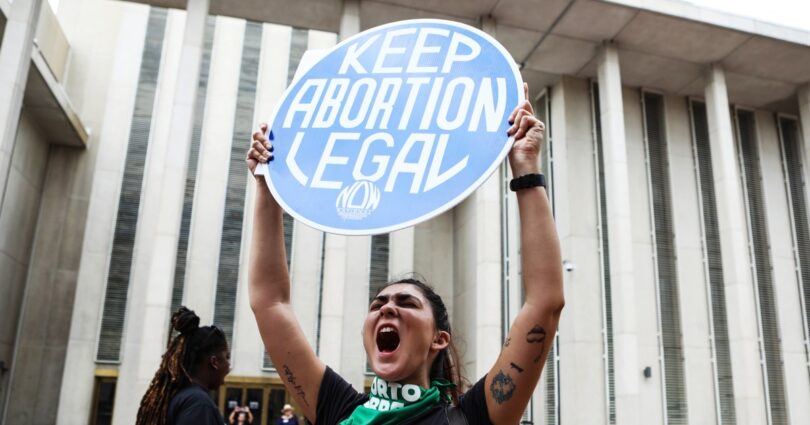In a pair of significant decisions, the Florida Supreme Court ruled Monday to uphold a 15-week ban on abortion in the state, while also allowing a proposed amendment that would enshrine abortion protections in the state constitution to appear on the November ballot.
The conservative-leaning court’s decision on the 15-week ban also means that a six-week abortion ban, with exceptions for rape, incest and the life of the mother, that Gov. Ron DeSantis signed into law last year will take effect.
But the bench’s ruling to allow the constitutional amendment to appear on the ballot this fall means voters will have a chance in just seven months to undo those restrictions.
The pending decision on the proposed amendment had been the last major obstacle in the red-leaning state for voters to decide on the ballot measure this fall.
Reproductive rights groups had surpassed the required number of valid signatures in the state needed for the measure, which state officials have already announced as « Amendment 4, » to appear on the general election ballot.
But under Florida law, the state Supreme Court must review the proposed language of any citizen-initiated constitutional amendment before it can formally advance.
Putting the decision to expand access to abortion in the hands of voters could help drive turnout among Democrats in Florida, where key races for president and U.S. Senate this year.
The proposed amendment would bar restrictions on abortion before fetal viability, considered to be at about the 24th week of pregnancy. It would include exceptions past that point for “the patient’s health, as determined by the patient’s healthcare provider.”
The effort by pro-abortion-rights groups in Florida to place the ballot measure is one of at least 10 across the U.S. seeking to put abortion rights directly in the hands of voters in 2024.
Advocates on both sides of the issue had long viewed the review as conservatives’ best chance to stop the measure from appearing, mostly due to the court’s ideological makeup: Five of the seven justices on the court were appointed by Republican Gov. Ron DeSantis, a fierce opponent of abortion.
The review was also aided by a robust challenge from anti-abortion conservatives in Florida, including Republican state Attorney General Ashley Moody, who contended that the ballot language was designed to mislead voters.
Moody’s challenge specifically urged the court to prevent the question from appearing on the ballot altogether. She slammed the measure as an effort designed to “hoodwink” voters because abortion-rights supporters and opponents have different opinions on the definition of fetal viability.
But judges didn’t buy the argument, ruling that it wasn’t unclear or confusing to voters, two of the criteria the court is charged with evaluating in deciding whether to allow a measure to appear.
The decision wasn’t entirely unexpected.
Despite its ideological make-up, the conservative court’s justices signaled during opening arguments last month that they were likely to let the amendment appear.
Despite doling out tough questions to the attorneys representing Floridians Protecting Freedom, the abortion rights group leading the ballot effort, the judges were even harsher in their commentary to attorneys for the state.
“It’s pretty obvious that this is an aggressive, comprehensive approach to dealing with this issue,” Chief Justice Carlos Muñiz said at one point, shooting down an argument that the ballot language was confusing. “The people of Florida aren’t stupid. They can figure out what this says.”
The court’s deadline to approve or reject the proposed language was Monday.
Source link








